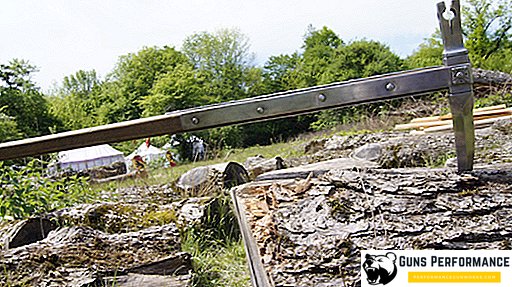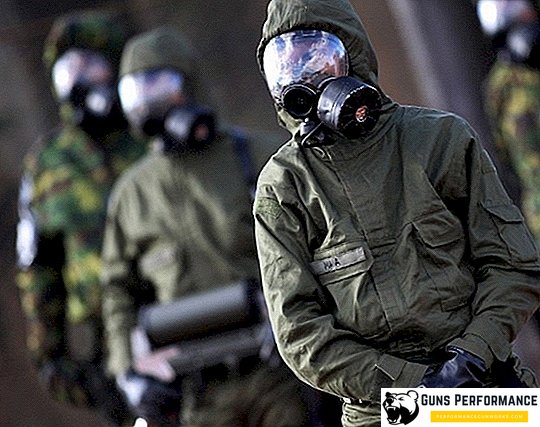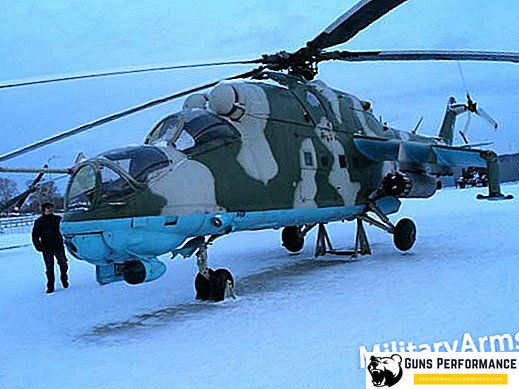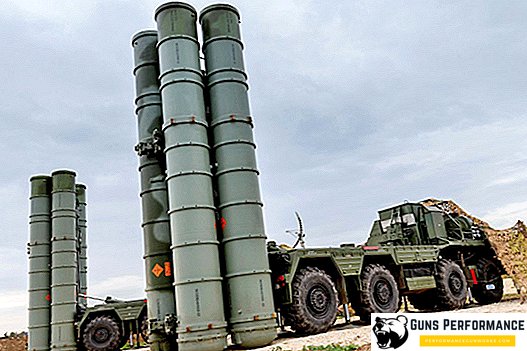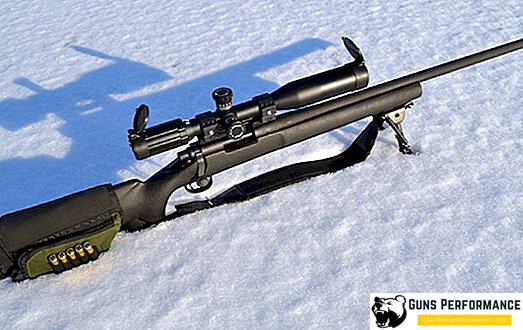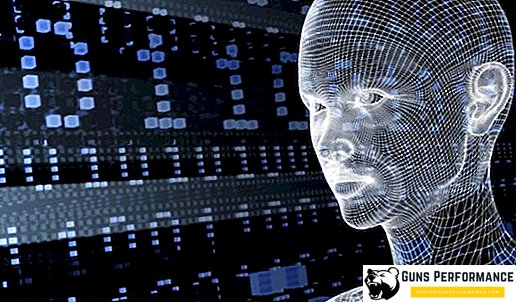
"Armor is strong and our tanks are fast," - this was the song sung in the popular Soviet song of the 30s. And it was absolutely true: in terms of armor protection and speed characteristics, Soviet tanks of the prewar period were superior to the best foreign analogues. The star of numerous parades and present symbols of armored power of the Land of the Soviets were the BT series tanks, the production of which began in the first half of the 1930s. Even today, looking through newsreel footage of these machines, one cannot but admire their speed and maneuverability.
The creation of a light tank BT is the result of the development of the concept of wheeled-tracked tanks - one of the areas of tank construction in the interwar period. The design of a fundamentally new wheeled-tracked tank was developed by the ingenious American inventor Walter Christie, but his ideas did not find understanding in their homeland. But his car was almost perfect for those strategic plans that were painted by Soviet commanders in those years.

The Soviet Union bought a patent from an American, and on the basis of his ideas, a whole series of light and high-speed vehicles was created, perfectly suited for waging war on maneuver. The Soviet tank BT participated in all pre-war conflicts: with the Japanese in the Far East, in the Spanish Civil War, in the Winter War, in the Polish campaign. Light tank BT formed the basis of the Soviet armored forces at the initial stage of the war. Virtually all BT tanks located in western districts were knocked out in the first months of the war, but they remained in significant numbers in the Far East and took part in the Soviet-Japanese war of 1945.

The development and production of various modifications of the BT tank allowed the domestic tank building to get on its feet, gain experience and, ultimately, move on to the production of more powerful combat vehicles with anti-bullet booking. Few people know that the famous "thirty-four" was created on the basis of one of the machines of the "high-speed series".
In general, wheeled-tracked tanks have become a dead-end branch of the development of tank building. This became clear already in the late 30s, so work in this direction was gradually frozen.

The history of the creation of the BT-2 tank and its modifications
The first tanks, which appeared during the Great War, can hardly be called perfect mechanisms. They were bulky, cumbersome, lacked firepower and often broke. Another serious problem of the first tracked combat vehicles was their slowness. The speed of 10 km / h was quite sufficient to move around the battlefield, cover the infantry or break through the enemy line of defense, but it was clearly not enough to transfer tank units from one front to another. In addition, the tracks of the tanks of that time were distinguished by a very limited resource and, in general, were the "weak link" of these combat vehicles. Their resource rarely exceeded 100 km, it should be noted that they could not significantly solve this problem until the mid-thirties.
It was the low speed of the tanks that led to the widespread use of armored vehicles, although in their patency they, of course, could not compete with tracked vehicles.
Tanks were trying to transport to the battlefield in heavy trucks, but this was extremely inconvenient and required additional costs.
As early as 1911, the first draft of a wheeled-tracked tank was developed, in the following years dozens of similar machines were created in different countries. Such hybrid tanks were moving along the road with the help of wheeled propulsion, and they used tracked vehicles on rough terrain. Most of these projects remained on paper or in the form of single prototypes. Such machines were difficult, expensive, and over time, conventional tracked tanks increased in speed, and their running gear life was noticeably enhanced.

To create a really successful wheel-tracked vehicle only from the American designer Walter Christie, who found a simple and original solution. He proposed to increase the tank wheels of the tank almost to the size of an ordinary car wheel, to make the rear rollers leading, and two pairs of front wheels - to control. Thus, the crew needed only to remove the tracks from the tank in order to transform the tank into an armored car. There was no need for complex and heavy mechanisms for lowering one or the other propulsion unit, changing wheels to tracks required a minimum of time.
However, Christie was not interested in the American military’s invention, but very soon the talented designer found another customer for himself - the USSR.
In the late 20s, the Soviet Union started creating its own tank industry, but at first it didn’t work very well. Soviet sales representatives dashed around the world, buying samples of military equipment and trying to attract foreign specialists to cooperate.
Christie's project aroused great interest among the Soviet military, it fit perfectly into the concept of the Deep Operation, developed at the end of the 20s by the prominent military theorist Triandafillov. The invention of the American designer significantly increased the operational mobility of tank formations, the aircraft engine mounted on Christie’s tank allowed him to develop an unheard of speed on the highway — more than one hundred kilometers per hour.
April 28, 1930 the USSR bought from Christie two built tanks for 60 thousand dollars and all rights to manufacture these machines for 100 thousand dollars. The designer himself refused to come to the USSR.
In spring, prototype machines arrived from overseas were shown to the top leadership of the Red Army. The military liked the new tanks, it was decided to start mass production at the Kharkov Locomotive Plant (the future Malyshev plant).

In the same year, the Christie tank with a turret of a new design was put into service and received the name of the BT-2. November 7, 1931 BT-2 tanks participated in the parade on Red Square. True, in preparation for the event, one of the cars caught fire and was sent for repair.
The large-scale production of the BT-2 tank was deployed in Kharkov only in early 1932. At first, the Soviet tank builders faced a huge amount of difficulties: there was a shortage of high-quality materials, equipment, and trained personnel. A particularly acute problem was the lack of engines (the M-5 aircraft engine was installed on the BT-2 tank), because of the poor quality of the tires, the track rollers were constantly destroyed. No less complicated was the armament of the combat vehicle. Initially, the 37-mm PS-2 cannon was planned to be installed on the BT-2 tank, but they could not set up its large-scale production. Later, the B-3 gun was offered for arming the machine, but its Soviet industry produced in insufficient quantities. As a result, part of the BT-2 (350 pieces) remained armed only with machine guns.

Gradually, most of the industrial and technological problems were resolved, the release of the BT-2 continued until 1933. Then he was replaced by a more perfect modification - the BT-5 tank.
This machine had an elliptical and larger tower mounted on an extended shoulder strap. The BT-5 tank had a 45-mm cannon and a 7.62-mm machine gun paired with it. The body of the "five" practically did not differ from the BT-2.

The release of BT-5 began in March 1933 and lasted until the end of 1934. During this period, was released about two thousand cars. In addition to the BT-5, there was a modification of the BT-4, but it was never launched in the series.
In the thirties, many of the most fantastic designs of tanks with several propulsive devices were developed. In addition to serial wheeled-tracked tanks, the plans were the creation of vehicles with three (amphibious tank) and even four propellers (floating and driving on rails). Naturally, such projects were not implemented.
Also experiments were carried out with changing the wheel formula.
The main problem of all the BT series of tanks was their weak (anti-bullet) booking. For the time being, they put up with this situation: the fact was that all combat vehicles of the 1930s did not have anti-missile protection, and this was considered the norm, and BT tanks significantly exceeded their foreign counterparts in maneuverability and speed characteristics.
By the end of the 30s, the need to create a new heavier tank, whose armor could withstand artillery and tank shells, became acute. However, the concept of a wheeled-tracked tank did not allow a significant increase in the mass of the vehicle - the wheeled propulsion unit did not allow.
The most advanced modification of the entire family of high-speed tanks was the BT-7, whose production began in 1935. In contrast to the BT-5, the "seven" had a welded hull, a more reliable M-17 engine, and diesel engines were installed on later versions of this machine. Release of the BT-7 lasted until 1940. An overview of the BT-7 tank would be incomplete without mentioning an artillery modification of a vehicle armed with a 76mm cannon.

All were released more than five thousand "sevens."
Already in 1935, work began on a more protected tank BT-20 (A-20). The leadership of the Kharkov plant, on its own initiative, began the development of a second, purely tracked modification of this vehicle - the A-32 tank. In 1938, the A-20 and A-32 were presented to the leadership of the People's Commissariat of Defense. The military wanted to launch a wheeled / tracked version of the tank into the series, but Stalin personally insisted on the tests of both vehicles. A fully tracked tank at the test site showed brilliant results and, after some modifications, was launched into serial production under a designation that the whole world knows today - the T-34.
On the basis of BT tanks, a huge number of various experimental modifications were created (flamethrower, radio-controlled, missile-carrying tanks), as well as many different armored vehicles: engineering, bridge-laying, repair and evacuation vehicles.
Description of the design of the BT series of tanks
The BT-5 tank was created to replace the not very successful first modification of the vehicle - the BT-2. In his layout, he almost completely copied his predecessor. Later this scheme will become a classic for many generations of Soviet tanks. In the front of the vehicle there was a control compartment with a driver’s seat, followed by a fighting compartment, and the engine compartment was located in the rear part of the tank. The crew of the BT-5 consisted of three people.

In the fighting compartment of the vehicle there was a turret with an instrument and a machine gun, as well as the seats of the vehicle commander and machine gunner-loader.
The hull of the tank was made of rolled armor plates, which were connected with rivets. The car had no rational angles, the only exception was the front part, which resembled a truncated pyramid. This form was necessary to ensure the rotation of the drive wheels. Compared with the BT-2, booking "five" has not changed. The armored protection of the driver's hatch cover was slightly enhanced. In general, the booking of the hull and turret protected the crew from fragments and bullets of small arms.
Towing hooks were located in the fore and aft of the hull.
In the fighting compartment on an extensive pursuit, an elliptical tower was installed with a 45mm 20K cannon and a DT machine gun paired with it. On some tanks, the anti-aircraft machine gun DT was also installed on the turret. The place of the tank commander, who also served as a gunner, was located to the left of the gun, to the right of it was the loader. In the roof of the tower were two hatches for landing and landing crew members.
In the niche of the tower of the BT-5 tanks, a radio station was installed.
The 20K gun had good characteristics for its time. The armor-piercing projectile had an initial speed of 760 m / s and could penetrate 37-mm armor at a distance of one kilometer. To hit the enemy's manpower and his open fire weapons in the tank ammunition consisted of fragmentation shells. Sights consisted of sights PT-1 and TCPM.
The tower provided the possibility of a circular attack from a cannon and a machine gun with vertical pointing angles from −6 to + 25º.

Ammunition of the usual tank was 115 shots, commander - 72 shots.
Usually, signal flags were used for communication, and 71-TK-1 radio stations with a characteristic handrail antenna located around the tower were installed on command vehicles.
The BT-5 tank was equipped with an M-5 gasoline engine with twelve cylinders. Its capacity was 400 liters. p., which allowed the combat vehicle to accelerate on the highway to a speed of 72 km / h and 50 km / h - on rough terrain. The tank's fuel tank capacity was 360 liters, on later versions of the BT-5 it was increased to 530 liters. It should be noted that the high consumption of gasoline was one of the main drawbacks of all tanks of the BT series. No exception was the BT-5. The powerful aircraft engine provided the combat vehicle with excellent speed and maneuverability, but at the same time it was exceptionally voracious.
Tracked propulsion consisted (on each of the sides) of the track gear with the open hinge, the guide wheel, rollers (four pieces), the rear drive wheel with drive rollers. Basic skating rinks were equipped with rubber bandages. On the track, the steering was carried out with the help of levers that were connected to the clutches with the clutches.

When moving from caterpillar to wheeled propulsor, the caterpillars were removed and fixed on the shelves. The machine was controlled by a steering wheel connected by rods with front-driven rollers. According to the then standards, the transfer of the car to a wheel drive was carried out in thirty minutes.
The transmission of the tank was similar to that of the BT-2; it consisted of a multi-disk main friction clutch for dry friction, two side clutches and a four-speed gearbox.
BT-5 was equipped with a stationary fire extinguishing system, which consisted of a tetrachloride fire extinguisher and several sprayers located in the engine compartment of the tank.

Characteristics of TTX BT-5 tanks
Below are the main characteristics of the light Soviet tank BT-5:
- crew, people - 3;
- weight, t - 11.9;
- length, m - 5.8;
- width, m - 2.23;
- height, m - 2.34;
- armament - a 45-mm cannon 20K and a machine gun DT (7.62 mm);
- ammunition - 115 shells;
- engine - petrol M-5 (400 hp.);
- power reserve, km - 300 (on wheels), 120 (on tracks);
- speed, km / h - 72 (on wheels), 52 (on tracks).


